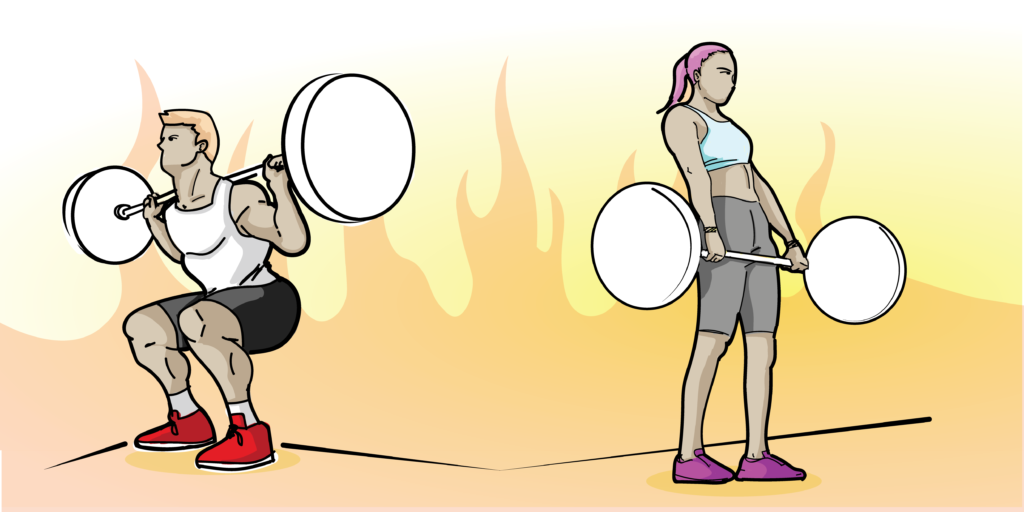You’re viewing an email from my weekly fitness newsletter “Physiqonomics Weekly.” Every week I drop some knowledge bombs on your face to help you get to your goals quicker while avoiding all the bullshit.
Not already subscribed? Well, let’s fix that. Drop your name and email address below and you’ll get the next issue of Physiqonomics Weekly in your inbox via some tech voodoo I don’t really understand.
No spam. Ever. Unsubscribe at any time.
21 May 2020 | by Aadam
Hey,
It’s time for another instalment of Physiqonomics Weekly.
Let’s get to it.
AADAM ANSWERS
1) I would love some guidance on the protein/lb or kg for people that are overweight. I’ve seen 0.8g protein /lb talked about when trying to build or retain muscle while losing fat, but for someone that is significantly overweight (50+ lbs) how do these ratios work? Could we use lean mass instead?
You could use your lean mass, but a much simpler approach that I like to recommend for people with more fat to lose is setting protein intake at 0.6g/lb (1.3g/kg).
If someone weighs 250lbs and we use 0.8–1g/lb, their protein intake would be 200–250g/day, a needlessly excessive amount. But if we use 0.6g/lb, their protein intake would be 150g/day. Far more reasonable.
2) Does eating more protein than necessary (1.5 or 2g/lb) accelerate muscle gain? If not, what can help? Seems like it takes so long to build muscle, especially if you strength train only 2-3 times a week.
No, eating more protein won’t accelerate muscle gain but it might help minimize excess fat gain. Muscle gain takes time if you’re a natural trainee and there isn’t anything you can do other than eat in a moderate surplus and focus on progressive overload over time.
THURSDAY TIDBIT
– Physiqonomics turns 5
Yesterday, Facebook reminded me that five years ago I started Physiqonomics.
I’m not one for nostalgia but this…this does feel special.
And not for the obvious reasons. Like the fact I’m still here. Or that people still enjoy reading my content. Or that I’ve had a number of viral articles and millions of site views and built a business doing things the way I want to do them.
Those things feel good, sure, and I’m grateful for all of them but that’s not why.
What makes this special is the fact it validates all the hard work I put in during the early days–giving up instant gratification for the long-term goal with no promise of a reward.
Because that’s the hard part, right? Sticking to something despite no guarantee it’ll work.
That perseverance, though, is what ultimately matters because anything worthwhile takes time.
In year one, you’re going to suck. In year two, you’ll suck less. By years three, four, and onward you’ll be pretty good. But you can’t improve if you’re constantly switching to something new when things get hard. Or worse, quitting.
Time is going to pass anyway so you might as well spend it working on something valuable, regardless of how long it takes.
– Body Pump burns the same amount of calories as traditional strength training
A lot of people resort to HIIT-style training when they’re trying to lose fat because they think it’ll burn a lot of calories which will result in fat loss.
One of these is BodyPump–a group exercise class that uses low-load resistance training combined with high reps.
A recent study (Rustaden AM et al., 2020) investigated the energy expenditure during a BodyPump class versus a time-matched traditional strength training workout in overweight women.
The researchers found that both groups burned approximately 300kcal during the workout. There was also no difference in how much resting metabolic rate was elevated after the session (the so-called Afterburn Effect).
So, once again, if your goal is fat loss the most effective way to ‘burn fat’ is to eat less food. Your training serves to retain your muscle and strength.
If you enjoy these types of workouts, continue doing them but ignore the claims made by these companies that you’re somehow burning thousands of calories–you’re not. And even then, traditional strength training should still be included in your weekly training.
#TBT

The ‘Afterburn Effect’ of Strength Training (?)
The Afterburn Effect–formally known as EPOC–is the cute name (because the fitness industry loves giving everything a cute name) for an idea that’s been around for years.
This so-called Afterburn Effect, people will say, is where the real fat loss benefit of strength training lies. You lift weights which boosts your metabolism turning you into some kind of human furnace burning hundreds, if not thousands, of calories after the workout ends.
Unfortunately, like with most things in the fitness world, these claims have been greatly over-exaggerated.
That’s all for today. Speak to you next week.
(If you enjoyed this, and think others would benefit–send this link to your friends and tell them to subscribe.)
–Aa